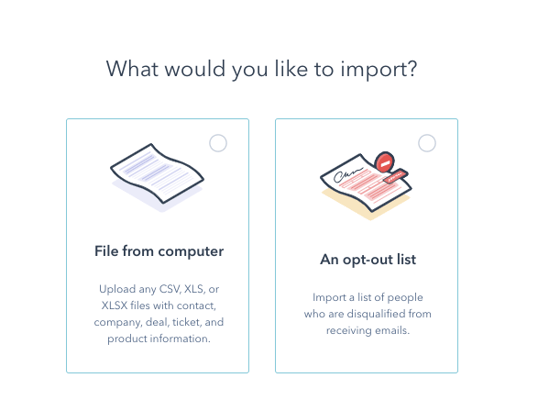Subscribe to ur Blog

What is RevOps and why you should care
Ranya Barakat
As the world evolves, new challenges and solutions are born, this is an undeniable truth in any field. In the business world, this evolution is even faster, so new approaches to business management are becoming increasingly important.
With this, RevOps or Revenue Operations has become one of the highest-demand positions in the market. Run a quick search on LinkedIn for the term Revenue Operations and you'll get what I mean. It’s cray-cray out there.
Let’s start with what is RevOps:
In simple terms, it's the strategic alignment between marketing, sales, and customer success, where one area (RevOps) takes the role of unifying strategy so that the 3 areas do not work in silos but rather in a coordinated way, with common objectives and an integrated tech stack.
If you look at it objectively, the ultimate goal of each area is to optimize the company's revenue: be it marketing, sales, or customer service. Although it seems that everyone is rowing in the same direction, more often we see deviations where each area's management focuses their efforts on what suits their department only.
A clear example of these deviations is the choice of tech stack. Think of it this way, a new Marketing Manager comes in and brings a great deal of experience with a specific marketing automation tool, so s/he pushes its adoption within their team. On the other hand, there is the Sales Manager who has been with the company for decades and is used to using the same CRM that has been used since s/he joined. This is when everything starts to derail: the automation tool doesn't pass data to the CRM, and each area continues to work in its silo, both focused on revenue, but keeping the data and reports for the exclusive use of their own area. This is where RevOps can make the difference.
RevOps functions can be divided into 4 main milestones:
-
Goal alignment
-
Identification of frictions
-
Establishing improvements
-
Evaluating overlaps
Establish goals
The first thing RevOps should do is clarify goals. It's important that these are SMART goals, i.e., specific, measurable, achievable, relevant, and time-bound. Having clear goals for the company (and not just those of the specific area) will help have better visibility on how each of the gears contributes to the common good. You can start with a main goal or objective, for example, 40% revenue growth vs last year by the end of 2022 and, with this in mind, optimize sources, channels, and tactics per area to achieve the number. For example, reducing churn rate, improving the quality of leads that marketing sends to sales, shortening the sales cycle, implementing a cross-sell strategy, and many other more specific goals.
Identify frictions and brakes to improvement
Once the goal is set, it’s time for an in-depth review per area in search of barriers that are in the way of revenue optimization and improvement. This is where frictions that generally hinder operations are put on the table. For example, SLAs between departments are established and a global interaction strategy between each area is defined together. When a prospect is considered sales qualified, or when a customer success is sent back to sales for cross-sell opportunities, or what the definition of MQL is, or what an evangelist means, etc...
As stated in this SuperOffice study, the lack of alignment between marketing and sales costs the industry more than a trillion dollars a year, in addition to the fact that it can lead to demotivation problems, hindering the work of each employee, and have an additional cost to the company.
Establish improvements and solutions
This is probably the most important step that RevOps must accomplish, and once the goal is defined and the main obstacles that the company faces are found, it's time for the RevOps team to get to work defining the processes and improvements necessary to achieve the objectives. Here, the RevOps team defines priorities and starts implementation; these can be segmented into operational, technological, and reporting or data analysis.
One of the main difficulties for the RevOps team lead will be mediating with the different areas to define the common good and not arrive at an imposing vision. In addition to the strong focus on processes and improvements, the human factor is also key to success.
Evaluate overlaps
Finally, once you start implementing improvements, It's time to pay attention to which processes overlap between different departments. For example, a poorly nurtured lead sent to sales early may appear to be primarily a marketing problem, but at the same time it will lengthen the sales cycle of your colleagues and, once you close the deal with the company, they may become a difficult customer to keep if the expectations created by sales are not aligned with what Customer Success can offer.
Areas of influence
To ensure the success of a RevOps team, it's important to be clear on areas of impact as they will need to be given the most freedom. If this newly formed team is not empowered, it will be difficult to achieve the expected results. And, although in each of the areas there are probably people already performing some of these functions, it's the responsibility of RevOps to create a mapping with a holistic view of the entire business, and without bias to particular interests of each area.
Operations
One of the most sensitive areas that RevOps touches is operations because, in the process of ensuring that goals are met, a main area of interference is resource management and the definition of new processes. RevOps will have to ensure that the goal is not lost in sight, and in this approach, some sensitivities may appear. Change is not everyone's favorite. But when the goal is clear and the teams are willing to do their part, RevOps offers greater transparency and planning, better collaboration between areas, innovation in internal processes, and increased resource management efficiency.
Implementations
There is no worse technology than the one that is not used and this is a very common pain I hear of when I talk to my clients. Between staff rotations, new tech, and a focus on greater collaboration between areas, it's necessary to devote a lot of time and effort to ensure that everyone is on board. From technical training to a little coaching and talent development, RevOps has the mission of making sure that the entire team is in sync, trained and clear on objectives.
Data analysis and management
Another great area of opportunity in companies that are not aligned is that everyone works with their own data, which is why RevOps must pay special attention to ensure that the data is reliable and that everyone involved has the necessary access to it. Today more than ever, data is one of the most valuable assets your company has, that is why it's of vital importance that it's not inaccessible. When information flows in a bi-directional way and is not hidden in silos, the company's objectives become clearer and the end customer's experience improves considerably, in addition to a more strategic and realistic analysis of the current situation.
Tech Stack
Finally, what makes all of this work or even possible is the integrations of your tech stack. Remember the pain companies have when each area has its own independent tech stack? The solution is to integrate them together, pushing them into one CRM. We all know that there is no one tool that does it all. It doesn't exist. There are tools that do most of what you need, but there will always be an extra set of tools. That’s fine. That is where the integrations come on because you can pass that data from one tool to another.
It's also more common than you might think that the same company has different tools that do the same thing. Well implemented, this could reduce operational costs of the company in general. We see this happening mainly with marketing automation tools, CRM, ERP, and other software that each of the areas signs up for separately. One key function of RevOps is to inventory this tech stack and put it to work for the benefit of the company, eliminating unnecessary tools, optimizing the use of those you already have, and ensuring that the entire stack is properly integrated and functional for everyone.
How do I know if I need RevOps?
If you've gotten this far, you probably identify with the points I mentioned above and it's a good alternative to start considering a dedicated team. However, if the company doesn’t have enough resources, one option is to create a RevOps committee among the members of the Marketing, Sales, and Customer Success areas, so that together they can shape and define the agreements, the global strategy and align the areas.
If you have one of the following pains, it's probably time to take action:
Non-aligned areas
This is one of the main symptoms that a third party is needed to help bring order to the house and provide direction to all areas so that they work in a synchronized way and with the same objective.
Your processes do not adapt
Change is the only constant... Are your company's processes governed by this idea? If not, then a specialized RevOps team may be the solution you are looking for. Not only will you speed up the definition of new processes, but you will also be able to constantly update the existing ones so that the daily operation is not the culprit of obsolete and inadequate processes.
It's difficult to project revenue
When sales spend more time criticizing leads than marketing sends, marketing complains that sales don't close business, customer success doesn't get back to current customers in time to make additional sales, and other frictions happen in your company, it's hard to predict what the company's actual revenue will be. Each area is focused on its own KPIs and this generates discontent and unpredictable revenue.
When you have more technology tools than you can control
Technology should be there to help your business grow, not to be tamed. If your teams spend more time than they should learning new tools and everyone is indiscriminately using different software that doesn't communicate with each other, it's definitely time to intervene. Not only are you unnecessarily investing in underutilized tools, but you are also jeopardizing the integrity of your most valuable asset, the data.
Whether you build an in-house RevOps team, hire subject matter specialists, or work a hybrid model, alignment between areas and tools is something you must pursue if you want more predictable revenue and a better customer experience. If you need help with this, please contact me.
Related Reads
Master HubSpot tools & unleash a world of endless possibilities!
Unlock Your HubSpot Powerhouse: Contact Us to Transform Your Digital Journey!

Ranya Barakat
Ranya is a serial entrepreneur with over 8 years of experience working on the HubSpot CRM. She loves pushing her sleeves up , and getting s*** done. When she is not running her HubSpot partner agency, you can find her upside down on her yoga mat.
Subscribe to our blog
The best information about inbound marketing, sales, guides and migrations.


